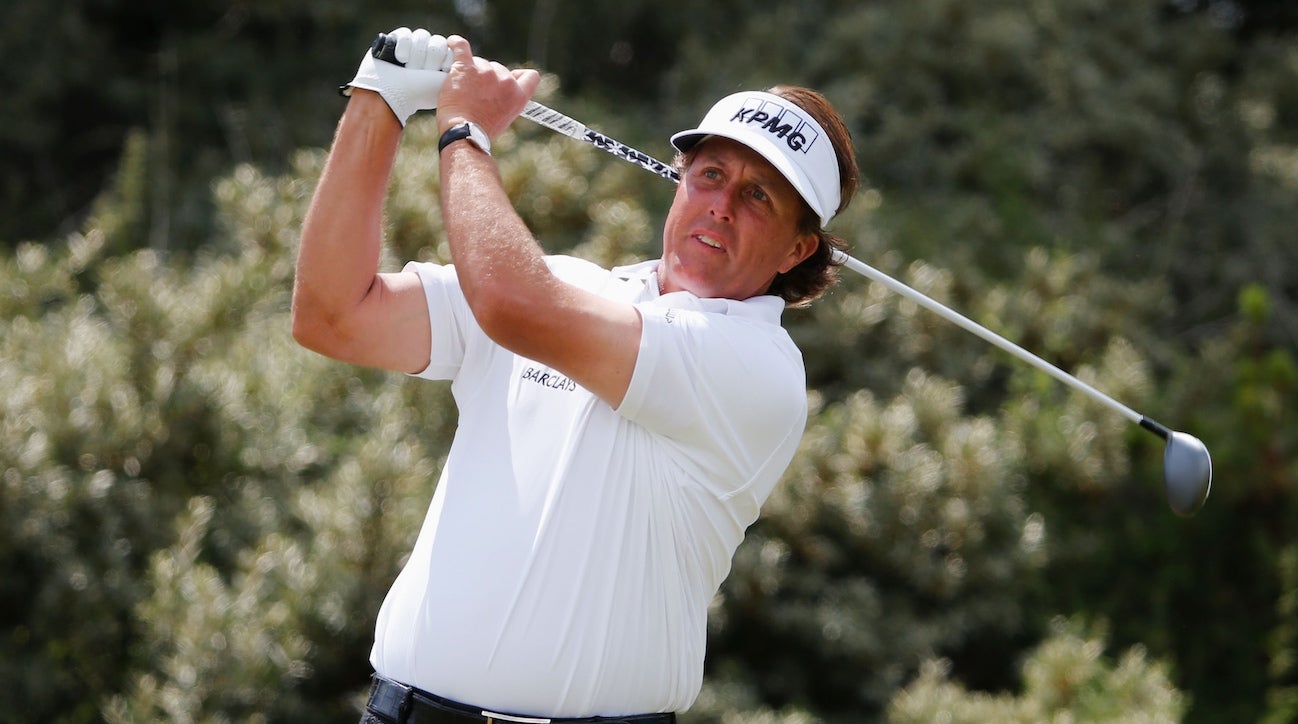Although the U.S. Open continues to elude Phil Mickelson, the Open Championship was once considered the major he would never win. This assumption wasn’t based on skillset, but rather his propensity for an above-average ball flight and over-reliance on a through-the-air short game instead of a bump and run style.
It was in 2013 with a unique bag of clubs that Phil truly committed to answering the questions links golf asked of his game, and hoisted himself to victory at Muirfield to become the champion golfer of the year. This is a look back at the clubs Phil Mickelson used to win his Claret Jug.
Driver
(No Driver)
Phil has always been known to go to extremes with his club set up and in 2013 he did just that. The same man who famously used 2 drivers on his way to winning The Masters in 2006 opted for no driver and instead used a strong lofted 3-wood off the tee.
3-Wood
Callaway X Hot Pro 3Deep (13°), with Mitsubishi Chemical Fubuki K 70 X
Whether it was off the tee or from the fairway Phil used this club with exacting precision around the links of Muirfield. The deep face of the XHot 3Deep allowed him to better control trajectory compared to a longer shafted driver, and thanks to Phil’s club head speed he had no issue using it from the tight fairways either.
This club was a major key to victory.
Hybrid
Ping Anser (17°), with Mitsubishi Chemical Kuro Kage
Phil’s Callaway club contract always allowed for some wiggle room and this Ping hybrid was one that definitely spent a good deal of time in his bag. There was something about the Anser hybrid that made it a favorite among better players because Phil wasn’t the only non-Ping golfer that played one around this time.
Irons
Callaway X Forged (4-PW) with KBS Tour (4,5,6) and KBS Tour V2 (7-PW)
From a club head perspective in 2013, Phil’s irons were really simple. The X Forged was a one-piece forged cavity back that offered a great combination of forgiveness and workability. What is interesting about his set at this time is the combination of iron shafts used from the longer to the shorter clubs. This combination of shafts allowed for varying trajectory through the set without having to build a combo set using various heads, and also helped with the transition to the wedges.
Wedges
Callaway X Series JAWS (52° & 56°), MD2 (60° & 64°), with KBS Tour V2
Thanks to only carrying a single fairway wood and hybrid, Phil was able to employ a full array of wedges with perfect 4° gaps in between. This combination made sure he could always control spin approaching and around the greens.
Putter
Odyssey #9 Versa
What’s black and white, black and white, back and white? A penguin rolling down a hill (I’ll see myself out). But also the paint job on Phil’s Versa putter that created extremely high contrast for alignment perpendicular to the putting line. The Versa putters might be gone but high contrast alignment markings still heavily exist in Odyssey’s line today.
Ball
Callaway Prototype HEX Chrome+
This prototype ball was part of the popular HEX line that offered high greenside spin with low spin off the driver. Although unconfirmed, it’s likely Phil’s prototype ball offered even lower driver and iron spin compared to the retail version to help combat his natural tendencies, and it’s hard to argue with the results.
Want to overhaul your bag for 2022? Find a fitting location near you at GOLF’s affiliate company True Spec Golf. For more on the latest gear news and information, check out our latest Fully Equipped podcast below.
